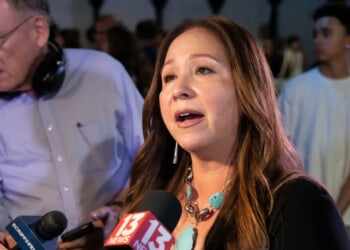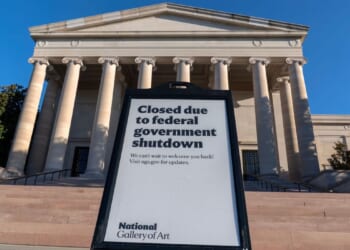Why stop at a 50-year loan for first-time home buyers? Why not a 100- or 500-year loan?
The 50-year mortgage spells great news for bankers but more bad news for buyers.
It means that the average first-time homebuyer — a person not in his or her 20s as in the past but now 40 years old — likely dies before ever truly owning his or her house. But the loan does bestow upon the buyer the pleasure of sending monthly checks to the true owner of the house, i.e., a bank, as he or she pays the taxes on a property that the bank owns. (RELATED: The GenZ Case Against the Property Tax)
That sounds like a great deal — for the banks.
If that sounds like a bad deal for the buyer in theory, then that is because it’s a terrible deal when one does the math.
Opting for a 50-year loan over a 30-year loan means a slightly lower monthly payment at the cost of 20 more years of monthly payments. If that sounds like a bad deal for the buyer in theory, then that is because it’s a terrible deal when one does the math.
The average price for a home sold in the United States in the second quarter of 2025 was $512,800.
Generously assuming that one taking out a 50-year loan puts down 20 percent of the price and that the bank provides the same 6.25 percent rate that now prevails for 30-year loans (in reality, neither of these things will happen), the debtor would pay $1,341,417.70 for the loan on the house. This includes $931,177.70 in interest — a figure more than double the $410,240 principle initially owed on the loan.
The benefit, paying $2,235.70 a month instead of $2,525.92, seems negligible. One supposes $290 a month amounts to something more than negligible for many people. But is it worth paying $931,117.70 instead of $499,090.57? (RELATED: Democrats Decry Another ‘Crisis’ They Caused)
“Our Government is the potent, the omnipresent teacher,” Justice Louis Brandeis famously wrote in his Olmstead v. United States dissent. “For good or for ill, it teaches the whole people by its example.”
Since at least the financial collapse of 2008, the federal government has taught Americans to live beyond their means by borrowing enormous amounts of money. Prior to the collapse, the national debt amounted to about $9 trillion — a figure strangely quaint to 2025 eyes; understandably obscene through the lens of 1787.
It now eclipses $38 trillion. Despite the government allegedly shutting down from October 1 through November 12, the national debt increased by about $500 billion during that time. (RELATED: How Did We Reach a $38 Trillion Debt During a ‘Shutdown’?)
Hmmm.
For the fiscal year that just passed, the federal government paid $1.2 trillion in interest to service the $38 trillion debt that we collectively owe. In other words, more than one in every six dollars the federal government spends goes to merely servicing the debt. Given that the deficit for the fiscal year that just ended reached $1.7 trillion, that fraction inevitably grows.
This cheap money philosophy relies on artificially low interest rates. It’s but one way that government policy inflates housing prices. Exorbitant property taxes, inflation as the stated policy of the Federal Reserve, restrictive zoning and environmental laws, and write-offs for home-loan interest payments are other ways that government keeps prices artificially high.
Donald Trump’s proposal of a 50-year mortgage more easily allows more Americans to pay more interest. Americans do not need that (even if sellers and banks want that). Americans, particularly younger ones, need a larger supply of homes to meet demand in the vicinity of demand’s pocketbook, and for government to stop intervening in ways that artificially prop up prices.
Young Americans want homes, not more and bigger loans.
READ MORE from Daniel J. Flynn:
Nancy, It’s Nice to Say Goodbye
Dems Take Away Free Food From the Snapanese at Great Political Risk





![Boomers Show Up In Force for the 'No Kings' Anti-Trump Protests [WATCH]](https://www.right2024.com/wp-content/uploads/2025/10/Boomers-Show-Up-In-Force-for-the-No-Kings-Anti-Trump-350x250.jpg)









